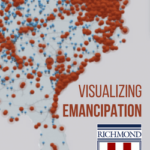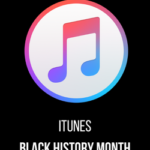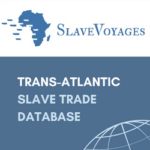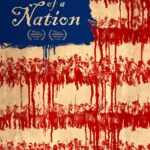If Digital History is “using new technologies to enhance research and teaching,” as the excellent website from the University of Houston puts it, then African American history is being well-served digitally. In honor of African American History month, I survey here one enormous and useful website that gives us all access to a very wide variety of materials.
Together, The Library of Congress, National Archives and Records Administration, National Endowment for the Humanities, National Gallery of Art, National Park Service, Smithsonian Institution and United States Holocaust Memorial Museum have constructed a wonderful site here for African American History Month, to “join in paying tribute to the generations of African Americans who struggled with adversity to achieve full citizenship in American society.”
This year’s theme, chosen by the Association for the Study of African American Life and History, is Black Women in American Culture and History. But the sources available on this extensive website don’t seem to focus on women (maybe we have to wait until Women’s History Month in March for that). But the offerings are wide ranging: texts, podcasts, photographs, and videos of everything from Art and Baseball to poet Yusef Komunyakaa and writer Zora Neale Hurston.
One of the things I like best about this website is that each link makes it possible to learn a little about a subject and move on or to learn much more by following links deeper into the public digital offerings of each of these great institution’s holdings.
In this blog post I can only scratch the surface of this rich site.
Beginning with the homepage, links will take you to a handful of featured collections including the Library of Congress’s collection of Carl Van Vechten’s photographs of people connected with the Harlem Renaissance and to the National Museum of African American History and Culture’s current exhibition on slavery at Jefferson’s Monticello. It also has a link to the National Park Service’s online exhibit about the Tuskegee Airmen.
The largest subsection linked from the homepage is list of Exhibits and Collections, where links will take you to collections in the Library of Congress, The National Archives, The National Park Service, and the Smithsonian. Some of these are themselves quite extensive. Under “Culture and Folklife”, one collection from the Library of Congress, links to an exhibit, “African American Odyssey: A Quest for Full Citizenship,” that includes dozens of full text books, including Phyllis Wheatley’s 1773 poems, an 800-page book on the Underground Railroad, several fugitives accounts of escape, recapture & re-escape, a number of works on the slave trade and slave revolts, songs and photographs from the abolitionist movement; photographs and newspaper articles dominate the twentieth-century section of the site. Each item can be easily followed into the Library of Congress collections for similar or related items. The African American Odyssey page also includes links to deep collections on Frederick Douglass, Jackie Robinson, Slave Narratives from the Federal Writers’ Project, African American pamphlets from the 1820s-1909, and the 18-19c history of Slaves’ experiences with the courts. And that is just one page in one section of the African American Odyssey.
This site now gives us access to hundreds of early sound recordings (and related photos and print materials). My favorite example (one of ten collections listed for African American History Month) is “‘Now What a Time’: Blues, Gospel and the Fort Valley Music Festivals, 1938-43.” Listen, for example, to Sonny Chestain playing “Po’ Boy, Long Way from Home.” Or listen and look through the “John and Ruby Lomax 1939 Southern States Recording Trip,” which Karl Miller discussed in his feature last month here on NEP. Here is Aunt Mollie MacDonald singing (and clapping) “Rosie.” That’s Mollie on the right in this fuzzy photo.
There are also eleven portal-links related to the history of slavery. A collection of materials on the transformation of Protestantism and construction of black religious experience from 1780-1925. Six sites on African Americans serving in the military. An exhibit about President Obama taking the oath of office on the Lincoln bible. Twelve sites listed under Culture and Folklife, that range from Florida to Chicago and Ohio and include 62 StoryCorps recordings of present-day interviews. Choosing at random, I listened to James Ransom and Cherie Johnson talking about their neighbor and Sunday School teacher, Miss Divine: “One of the things you prayed for, if you were in Miss Divine’s class, was ‘Lord, please let me get old enough, to get out of this class.’”
And even after all we’ve known and read and heard and watched about the impact of Hurricane Katrina, listening to Antoinette Franklin and Iriel Franklin talking about the strong women in their family brought me to tears.
Another fascinating set of sources is the collection of “First-Person Narratives of the American South, 1860-1920”, which includes more than a hundred diaries, autobiographies, memoirs, travel accounts, and ex-slave narratives, all scanned and easily readable right on the site. The travel accounts alone range from an AME Bishop’s voyage to Sierra Leone and Liberia in 1893, to the account of a young white woman, coming of age during the Civil War and moving through Mexico to Cuba where her family recreates the planation life they’d known at home.
There are thirteen sites on the Civil Rights movement, including some we have seen before here on NEP, like the beautiful NEH/PBS multimedia site to accompany the documentary on the Freedom Riders.
There is a link to the National Archives materials on the 1963 March on Washington and Martin Luther King’s famous speech, “I Have a Dream.” This page includes a list of discussion questions for teaching (or just thinking), youtube videos about the march, and links to other notable figures in African American history.
Visual images available for learning about African American history could be better represented here, but some searching and clicking reveals some very interesting materials. Most of the links I mentioned above have substantial visual components but the direct links to art exhibitions and to images are disappointing. The “Images” slideshow presents a fairly random selection of historical prints and photographs, an interesting introductory survey of sorts, but one that could have used more written descriptions of the images. And when you go down to “Images Used on this Site,” you only get links to a few individual shots from the very rich collections available deeper into the links listed under “Exhibits and Collections.”
The links under Art and Design are mixed. Several of the titles link to exhibits that are no longer available and most of the museums display only a tiny portion of their collections. Two of the links, however, are more satisfying. The Smithsonian’s African art museum offers a nice introduction to their collection with adequate historical and artistic descriptions. The National Museum for African American History and Culture has a couple nice exhibits (but not easy to find since the link is listed under the title of an exhibit that is gone). Eventually you get to “For All the World to See: Visual Culture and the Struggle for Civil Rights,” a wide ranging collection of images and material objects, accompanied by informative discussions of the role of the visual in inspiring activists and in providing evidence of atrocities that motivated others. Another part of the exhibit is devoted to the ambivalent images of African Americans broadcast on film and TV, and later, images produced by and for African Americans representing themselves in more complex ways, from the Black Panthers to ordinary people with snapshot cameras. I especially liked the exhibit of snapshots by ordinary people.
Back on the homepage, links to Audio/Video offers another extensive list of interesting things. There are videos of authors reading and discussing their own works, such as this one of Pulitzer Prize winning poet Komunyakaa from the 2011 National Book Festival. Lectures from the National Archives on a variety of historical topics. And music, poetry, and performing arts tapes of many other kinds.
Finally, this website offers a wide-ranging collection of materials organized specifically for teaching. The NEH has an excellent site, with the silly title, “Edsitement,” which offers teaching materials on the humanities broadly defined. Here there are links to targeted subjects like the NAACP’s challenge to D.W. Griffith’s film Birth of a Nation and JFK, the Freedom Riders and the Civil Rights Movement. The National Archives’ teaching sites also present a wide range of great topics: The Many Faces of Paul Robeson, The arrest records of Rosa Parks, and a special page with resources for middle and high school students preparing projects for National History Day.
After spending several hours (much more than I planned) exploring this website, and finding a surprising number of thoroughly enjoyable and informative sites, I should say that while there is an enormous amount of diverse and high-quality material, none of it is a departure from the traditional kinds of sources that historians have learned to consult. Photographs and songs certainly open up new corners of historical experience for our consideration, but they don’t fundamentally change the way we work. Ultimately digital history may change the way historians conceptualize the past, but for that we have to look elsewhere. Stay tuned.





